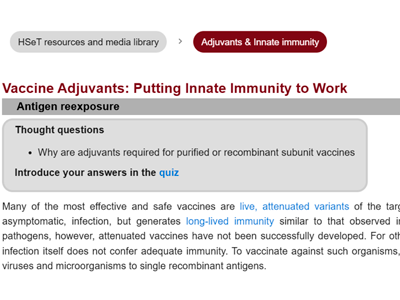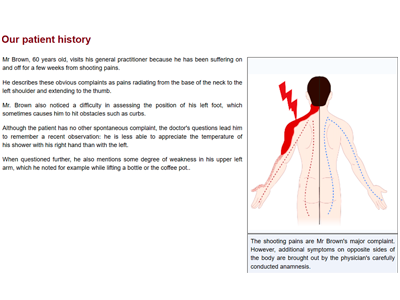Learning activities
HSeT provides novel pedagogical approaches and tools to help trainers make the most of their teaching. These include:
- Annotated articles are original scientific publications which have been enhanced with embedded definitions, links to self-teaching web pages, and thought questions. They also contain a guideline on how to read, evaluate and present an article. This resource can be used as self-learning material or in journal club session where participants are asked to present either the paper or the design of an experimental approach to address a question similar to that raised in the article

- Interactive biological or medical cases are supported by a web application and are designed to be explored individually or in small groups as part of case-based learning (CBL) program. As learners proceed through the case, they are asked to answer a series of quizzes designed to help them identify gaps in their knowledge and they receive relevant self-learning material to achieve predefined learning objectives.

- Virtual microscope tools are designed to be employed before and during histology practicals. Such practicals are proposed online using annotated virtual slides, related teaching

- Self assessment
- The objectives of self-assessments are multi-faceted. Firstly, they promote the skills of reflective practice and self-monitoring, encouraging individuals to critically evaluate their own performance and progress. Additionally, they aim to foster academic integrity by allowing students to self-report their learning progress, increasing self-accountability. Ultimately, they also help individuals to develop a greater sense of self-awareness, self-regulation, and personal growth.
- HSeT’s self-assessments use online quizzes for which learners receive grades and relevant feedback, (typically a didactical response and/or a link to a webpage related to the question. Question types include multiple choice, multiple response, true/false, pull down list, free text questions.
- HSeT’s quizzes also provide feedback for Instructors on the effectiveness of course content and its delivery. It furthermore supports asynchronous learning by providing a structure allowing trainees to verify their understanding and progress without needing immediate input from their instructors.